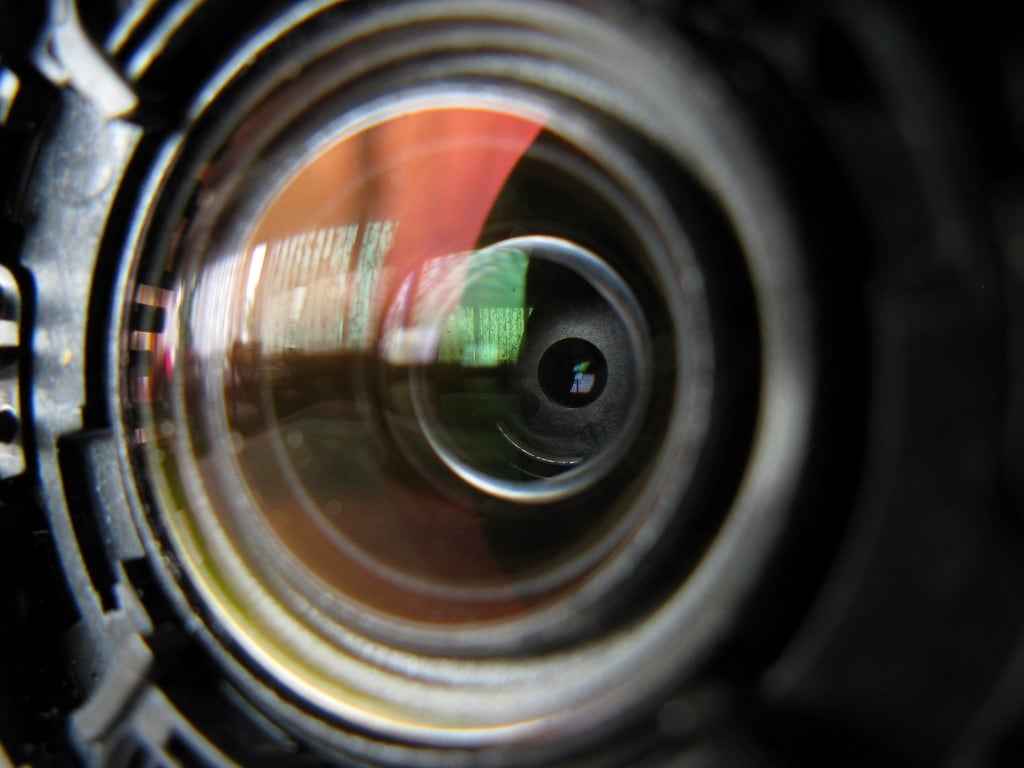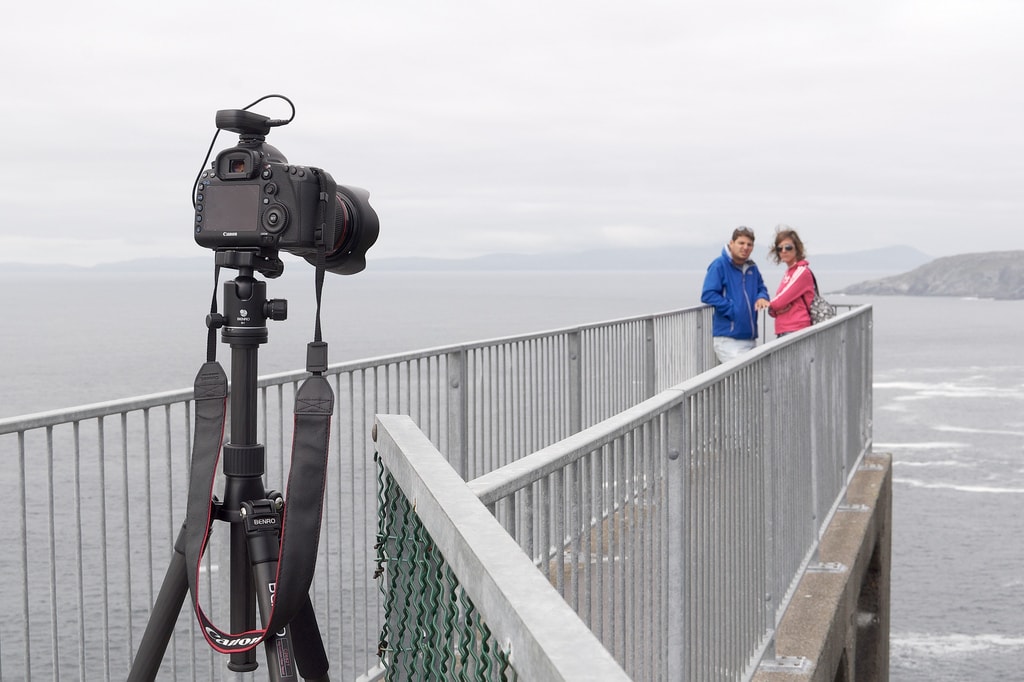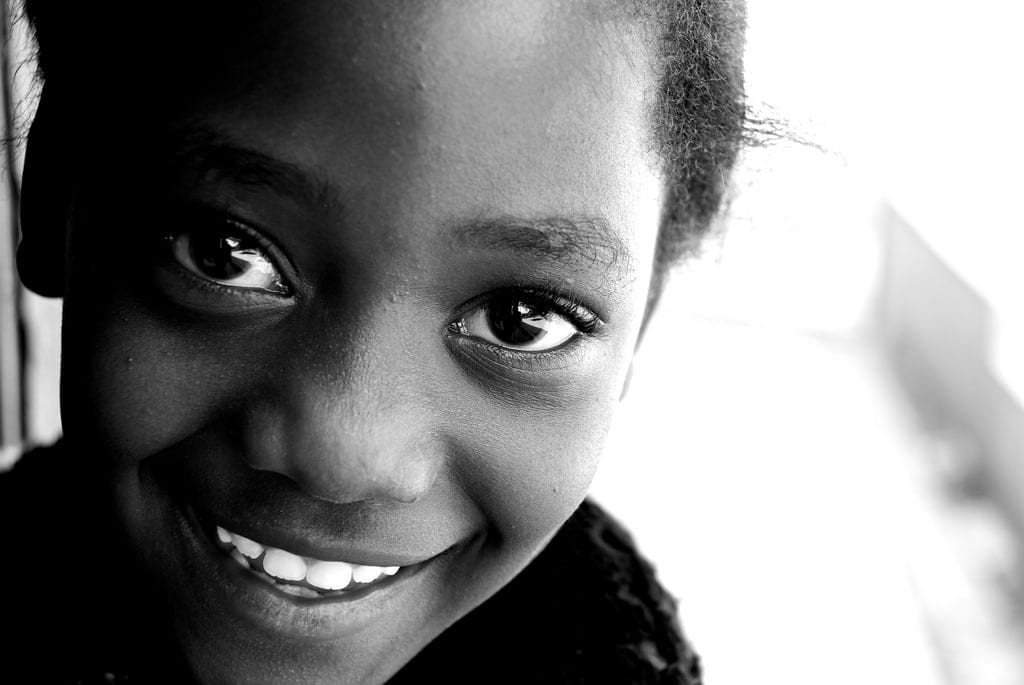There are few things in your life as a photographer that can obsess you as much as getting sharp photos . The search for perfect sharpness is a journey that begins when you take your first pictures, and continues relentlessly camera to camera, lens to lens, until you either master it or settle and learn to live without it.
Has it ever happened to you that after taking a photo and seeing it on the camera screen you think you have taken the best photo ever taken, but then when you download it to your computer, and when you see it in a larger size, you begin to notice that that magnificent perfectly sharp photograph, has it lost part of its charm?
Sharpness is not everything, but mastering it is a great step for any photographer to take a leap in quality in their photographs. In today's article I bring you 25 tips that will help you achieve sharpness in all your photos. Are you going to miss it?
WHAT IS SHARPNESS IN PHOTOGRAPHY?
Before telling you which are the most practical ways to achieve sharpness in each of your photographs, we must define what sharpness is:
Sharpness is a quality of sharpness, and sharp means clear, clean, that can be distinguished without confusion.
A photograph is clear when the object, subject or scene of interest to be photographed are well contrasted, that is, they can be clearly distinguished, they are perfectly focused and well defined. Remember that photography tries to emulate what you see with your own eyes.
From what I have just told you, it can be deduced that sharpness depends on both focus (definition) and acutance (contrast). These two parameters are essential to be able to achieve maximum sharpness in your photographs: but what does each one mean?
- Acutance: it is the degree of contrast that you can observe at the limit between the details of the photograph, which differ by their luminance or optical density. That is, by increasing the contrast the image appears sharper, but be careful that if you contrast too much, you may end up losing details.
- Focus: we can say that an object is focused when the rays of light "coming" from it, converge (cross) in the focal plane. Translated into Spanish, this means that an object is in focus when the light it emits, passing through the lens, is directed towards the focused sensor, that is, sharp.
The presence or absence of sharpness will depend on what you are trying to communicate with your photographs. Everything does not always have to be perfectly clear, but this will depend on where you want to direct attention in your photographs or how you want to convey the message with them.
There are photographs where sharpness is not an important factor, as in photographs that seek to capture and transmit movement , but in others, such as landscapes, sharpness becomes a fundamental factor.
WHY IS IT IMPORTANT TO GET SHARP PHOTOS?
Achieving perfect sharpness is not everything, in fact, the great masters of photography could only dream of achieving the sharpness that is possible today, thanks to advances in technology, and yet they have led the way for all the next generations of photographers.
Sharpness helps us to appreciate an image in a "not uncomfortable" way. What does this mean? Because the human eye sees clearly everything that its vision focuses on and it is desirable that when you take a photograph, especially those where you try to highlight a subject over others, it is clear. If it is not, the photography may be very good, but it will not be enough to be excellent.
Observe the following image of this beautiful girl, it complies with the photographic rules, the position, the framing, the model, the expression, everything is spectacular. But don't you notice anything strange when you look into her eyes?

When looking at the small photo, you will hardly notice the blur in your eyes (the same thing that happens when you look at your photos on the camera screen), which is the most attractive thing about photography. Her eyes are a little out of focus, not quite sharp, which makes a photograph that could be from a catalog, just a beautiful photo of a girl.
In order for you to achieve perfect sharpness in your photos, you must become a bit fussy and overly demanding. It is a process of continuous improvement, so it will require patience and a lot of practice. Leave your comfortable chair behind and go out to take photos.
HOW TO TAKE SHARP PHOTOS?
Sharpness is not everything, but it is a great help when it comes to achieving the best results with your photos. As I told you in the article 14 tips for taking pictures this Christmas , if you are already capable of achieving spectacular photos without paying too much attention to whether or not they are perfectly sharp, imagine how incredible your photos will be when you focus on everything you see interested in highlighting, come out perfectly sharp!
The sharpness in each of your photographs depends on many factors, some of which are controllable, such as the focal length or avoiding vibrations, and others with which you have to learn to live, such as the limitations of your equipment.
Now let's see point by point.
TEAM SELECTION
1. GET THE JUICE OUT OF YOUR TEAM
Not all photographers have the possibility of having the latest camera or the most expensive lens, so to get the most out of your equipment you must know it as much as possible. Reading the manual can be boring but I assure you that if you do, you will discover functions that you did not imagine your equipment had.
2. SET UP YOUR CAMERA
One of the functions that you may not have known about and that most SLR cameras and advanced compacts come with is that of being able to configure the sharpness and contrast parameters from their menu. It can appear as sharpness, sharpness , definition, etc.
Arm yourself with patience and start testing which setting is best suited to your liking, although I recommend not raising these settings to the maximum as they can generate aberrations. And keep in mind that, depending on the conditions where you are going to take your photos, you may have to adjust all these parameters again.
3. ALWAYS KEEP YOUR GOALS CLEAN
If you wear glasses you will understand more than anyone what I am talking about. Smudges on the lens glass will also reduce the sharpness of your photographs, so try to always keep them clean. I recommend that you read the following articles: Lens Cleaning: The Basics You Need to Know and The Complete Guide: Cleaning Tips for SLR Cameras .
4. BE CAREFUL WITH FILTERS, THEY CAN REDUCE SHARPNESS
As I mentioned in the article 8 ways to improve your photos thanks to a filter , not all photos will require a filter to take them. If we talk about sharpness, this becomes even more important since the filters also reduce the sharpness of the photographs. And it was to be expected that if you put a filter a few bucks in front of your much more expensive lens, some unwanted effect should appear, in this case, loss of sharpness. If you are looking for maximum sharpness, I recommend that you remove the filter.
5. CHOOSE YOUR OBJECTIVE WELL
The objective that you are going to use when going out to take your photos will also have an impact, and a lot, on the sharpness of your photographs. The objectives are built with a variable number of elements (crystals) that direct the light towards the sensor inside. The more elements are built, the lower the quality of the final photographs. Fixed focal lenses offer higher quality and therefore sharpness than the same variable focal lenses, not for nothing do they cost more than twice as much. If you have one, feel free to use it. If you have any questions regarding focal lengths, I recommend that you read the following article: Focal distance of objectives and lenses . You can put it into practice virtually using the Nikkor lens simulator .

EQUIPMENT SETUP FOR A SHARP SHOT
6. ISO, AS LOW AS POSSIBLE
The higher the ISO sensitivity, the more noise will appear in your photography, and therefore, less sharpness. Use, as far as possible, low ISO values as long as the photograph is not underexposed, otherwise you will lose contrast (acutance) and therefore sharpness.
Likewise, don't be afraid to increase the ISO sensitivity, it is better that the photograph has a little noise than that it comes out shaky, but be careful to do it in conditions where you are not going to lose too much quality: if you increase the ISO, do not underexpose the photograph because noise will spoil your photography. Do tests with your camera and see what is the maximum noise that you tolerate in your photographs.
7. USE INTERMEDIATE OPENINGS
All lenses have their "sweet spot", that is, their point of maximum quality level, at the midpoints of their opening. The maximum sharpness is usually achieved when using apertures f/8 to f/11 (approximately half the minimum aperture). Intermediate apertures allow the camera to use the center of the lens, its sweet spot, and not capture light from the edges of the lens, which is where the greatest distortions occur.
8. THE FASTER, THE BETTER
Don't be afraid, there's no fine here! The faster the shutter speed, the less jitter, and therefore, the sharper. Speed up enough so the photo doesn't come out blurry. There is a rule that will help you to know what is the minimum speed at which you should shoot in order to ensure that your photo does not come out blurred: use a speed equal to or greater (faster) than the focal distance used. We will see it in the next point.
9. INVERSE FOCAL RULE
As I was saying, use this simple inverse focal rule:
Shutter speed = 1 / used focal length
Example: if you are using the prince of lenses : 50 mm 1.8 without stabilization on a Nikon APS-C camera (not Full Frame), the minimum speed at which you should shoot so that your photograph does not come out blurry is: 1/75 of second.
Why 1/75 and not 1/50? Because being an APS-C sensor it is smaller than the 35mm standard under which all lenses are made and to calculate the true focal length of any lens on a camera with a sensor smaller than that standard, you have to multiply the distance focal length thereof by the corresponding factor, which for Nikon APS-C cameras is 1.5 and for Canon is 1.6.
A 50mm on a, say, Nikon D5300 is actually a 75mm (50 x 1.5), and on a Canon 700D , it's actually an 80mm (50 x 1.6).
10. USE THE HYPERFOCAL
The hyperfocal is a minimum distance at which you must focus so that everything behind it comes out sharp. This distance depends on the camera you are using, the focal length and the aperture of the diaphragm. You can calculate the hyperfocal distance with the following online calculator. It is a difficult concept to understand from the theory, so I will try to clarify it with an example:

In the previous photo, you can see that everything in it is in focus, all the planes are clear.
11. LOOK FOR THE BEST EXPOSURE
Exposure depends on ISO sensitivity, aperture, and shutter speed. These parameters are what define a correct exposure, and this is when the photograph is neither over nor underexposed, that is, neither burned nor too dark. If the exposure is not correct, you will not get sharpness in areas that are too dark or too light.

SHOOTING TECHNIQUES
12. HOLD THE CAMERA FIRMLY
Hold the camera with both hands, one holding the body ready to shoot and the other the lens, and try to use your body as a support. Without falling into awkward poses, try to support yourself with your elbows and knees so that your body gives stability to the camera and comfort to you. At the moment of shooting, try to hold your breath, without filling your lungs with air, so that the shot comes out as stable as possible, but be careful to only hold your breath when shooting if you don't want to run out of breath.
13. GET A TRIPOD
If you do not achieve a correct exposure and you need to decrease the shutter speed, it is best that, so that your photos do not lose sharpness, you get a good tripod that helps you keep the camera as stable as possible. Most sharpness issues are caused by camera shake, so look for stability to avoid it. If you already have one but you haven't gotten the most out of it, take a look at the following article: How to correctly assemble a tripod .
14. REMOTE TRIGGER OR DELAYED TRIGGER
It does not matter if you have the king of tripods , if at the time of shooting you do not have a remote shutter release or you do not set the camera to shoot in delay mode, it is very likely that just by pressing the shutter, you will end up moving the camera. camera messing up the shot. Take the precaution of using one or setting your camera in delay mode in order to minimize this factor that could take away the sharpness of your photos.
15. RAISE THE MIRROR
In addition to mounting your camera on a tripod and shooting remotely, it's also recommended that you "raise the mirror" on your camera and turn off lens stabilization to prevent these mechanisms from being activated, adding vibrations that can ruin your shots. Photographs. To raise the mirror you can shoot using the Live view mode of your camera.

FOCUS TECHNIQUES
16. ADJUST THE FOCUS MODE
Each type of photography you are going to do will require you to adjust the focus mode: photographing a bee flying over a flower is not the same as photographing a calm landscape in the middle of the mountains. If you have doubts about how to do it, I recommend that you read the following article: All about manual and automatic focus on SLR cameras .
17. BE CAREFUL WHEN REFRAMING
It is very common when using the “center point” focus mode to focus first and then compose. This way of doing it is quick and easy, but it brings with it a problem called “cosine error”: when reframing the photo, the initial and final focal length may vary. Use the different focus points of your camera to avoid losing sharpness in the area of interest.
Focus is made on a point at a certain distance but, by vascularizing the camera when reframing, without realizing it, the originally taken focal lengths have changed. The distance from the focal plane to the point of interest is no longer the same.
18. USE PRECISE FOCUS
You may not have known this, but most SLR cameras, in Live View mode , allow you to use a tool called “Precise Focus”. With a simple press of the zoom (+) button on the side of the screen, the camera magnifies where you're focusing so you can perfectly fine-tune the focus. Take the test, it is really easy to use.
19. ZOOM IN
Another way that you can make sure that your object or subject of interest is completely in focus is by zooming in on it, if your lens allows it, focus it and then open the focus to a smaller focal length. When you lock the autofocus, when you "open the plane" the focus will be located where you fixed it with the zoom.
20. PRACTICE MANUAL FOCUSING
It doesn't matter if you followed all of the above tips or not if, at the time of shooting, the object of interest was out of focus. Accuracy in focus is essential. The automatic focus mode, in certain situations, becomes disoriented and does not end up focusing where you wanted it to. Therefore, train your photographic eye to use the manual focus mode, for those moments when the camera does not know where to focus.
COMPOSE TO IMPROVE SHARPNESS
21. TAKE CARE OF THE LIGHTING
The way the scene is lit is critical to getting the perfect sharpness. Working in inadequate light conditions will not allow you to capture all the details of the subject or object portrayed. Ideally, you should work with soft light, such as on a cloudy day so that the light covers the scene evenly, without the excessive contrasts that occur, for example, in bright sunlight.
22. USE CONTRASTING BACKGROUNDS
The greater the contrast between the object or the subject with respect to the background, the better its sharpness will be appreciated. Try to use distant and contrasting backgrounds with respect to the photographed subject.
23. GET CLOSE TO THE SUBJECT
If you want your photos to be much sharper, get closer to the subject instead of zooming in on it. Although it is more comfortable and safer to take pictures from a distance, if you want to gain sharpness, I recommend that you put your zoom lens aside and start to get closer to the subjects yourself. You can get the same framing with the 300mm lens at a distance of 10 meters, as if you use a 50mm and get closer to it. The further the subject is from the sensor, no matter how much you zoom in, the sensor will capture it but with less detail. Take the test and you will notice a difference instantly.
24. COMPOSE AT THE TIME OF TAKING
Take your time to compose the photographs at the moment of taking them , do not rush to take every image that comes your way and then, by means of cuts with an editing program, accommodate the framing. When cropping the photograph, it loses information originally captured by the sensor, therefore, it loses quality and sharpness. Although it is true that each time the sensors have more and more megapixels, this does not always translate into an improvement in the final quality of the photographs.

SHARPNESS IN EDITING AND POST PRODUCTION
25. ALWAYS SHOOT RAW
If your camera allows it, do not hesitate, always shoot in RAW. Because? The information contained in a RAW file is much greater than in compressed formats such as JPEG since it is a "raw" or unprocessed file. The ability to retouch a RAW, especially in focus and sharpness are much more precise when using editing software on the computer than the camera itself is capable of. If what you want is extreme sharpness, you will have to do a good processing of the RAW files on the computer.

CONCLUSION
Achieving clear photos is not difficult at all, it just requires certain habits and precautions when taking the shots.
Although it is true that one of the main limitations when it comes to achieving perfectly clear photos is the equipment, if you know the limitations of your equipment and make the most of its virtues, your photographs will have nothing to envy to those of the professionals.
The most important thing you should do is go out and take photos. It is useless to acquire a lot of knowledge, techniques and tips if your camera is still stored in your backpack.
And remember that a perfectly sharp photograph is not better than another, just because of its quality and sharpness. One of the most wonderful aspects of art is subjectivity: each one understands photography in their own way and has their own way of transmitting their messages.


